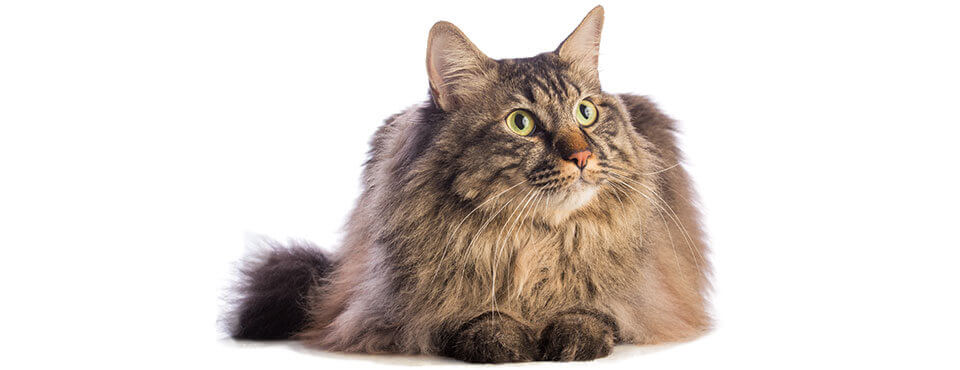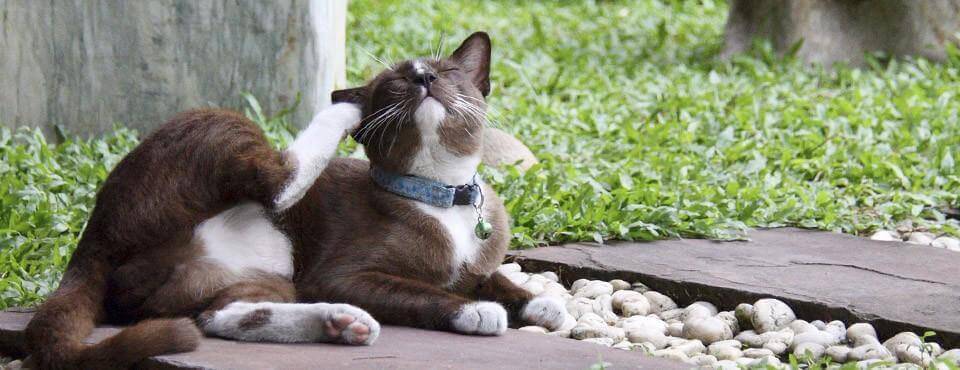Diabetes is triggered by a lack of insulin or, particularly in cats, it can be because the insulin being produced is not working effectively. Did you know that good dietary management of your diabetic cat can help? Insulin affects how your cat’s body utilises energy from food. This is why it’s important to balance insulin treatment with proper nutrition, as well as regular exercise. There are some basic principles for the dietary management of diabetes. First, the obvious: your cat must like the food and reliably eat it. A low carbohydrate diet for diabetic cats is the ideal choice. Your vet can determine appropriate caloric intake and advise on a weight management program if your cat is overweight. Weight loss should make your cat’s diabetes easier to manage and appears to be an important factor in cats that achieve remission.
It’s always a good idea to ask your vet about the best diet for your cat, including suitable treats for your diabetic kitty.
Here are some important things to keep in mind:

Diabetic Cat Food
These specially formulated veterinary prescription diets are meant to help minimise fluctuations in blood glucose. Low in carbohydrate and containing high quality, highly digestible protein, these diets can also be useful if your cat needs to lose weight.
Regular Cat Food
A regular or commercial cat food that offers a balanced and complete diet may be suitable for your diabetic cat, but in many cases, diabetic cat food may be a better option. If your cat receives a special diet for another medical condition it may be most desirable to continue to feed that diet. It’s a good idea to discuss this with your vet.
Clean Drinking Water
You should always have clean drinking water available for your cat. You can measure how much your cat is consuming throughout the day in order to monitor his or her progress, since the amount drunk will decrease as your cat’s diabetes improves with treatment.
Snacks or Treats
Your vet can recommend snacks or treats that are suitable for your diabetic cat. These should be included as part of your cat’s daily caloric intake.

Time Insulin Injections and Feeding
It is often recommended to feed your cat around the time that you give his or her insulin injection(s). This can help manage increases in blood glucose that occur as your kitty digests food.
Diabetic cats are often administered insulin twice daily and they are usually fed ad lib, as they are often fussy and prefer to eat when they choose. Free access to a measured amount of the food is often the best option. Consider using a connected pet feeder to help you monitor when and how much your cat eats.
Consult your vet for specific questions regarding type, volume, timing and frequency of meals.
I’m Not Sure if My Cat Will Eat a New Diet
Some cats can be fussy and getting them to switch to a new food may seem impossible! It may take a couple of days for your cat to get used to this new diet. You can try mixing the new food with your cat’s previous food, then gradually decreasing the amount of the old food you add in. It is important that your cat eats consistently, so if your cat really does not like the new food, then alternatives will need to be considered. You can discuss your cat’s diet with your vet and should consult him or her before making any dietary changes.
Body Weight and Condition
Maintaining your cat’s ideal body weight will help simplify managing his or her diabetes. Your vet will advise you as to your cat’s body weight and condition and how to manage your cat’s weight.
Underweight Cats – These kitties need a highly digestible diet containing high-quality protein to help them gain weight gradually.
Overweight or Obese Cats – These furry friends require gradual weight loss and careful insulin dose adjustment because of the risk of low blood glucose, a condition called hypoglycaemia, which is a serious complication of diabetes.
This Seems Like A Lot To Remember!
Managing the health and nutrition of your diabetic cat is really important and it can seem like a lot. The good news is that there are several products that can actually make feeding, tracking and monitoring just a little easier for you – plus, provide you with the reassurance that your beloved feline friend is getting just what he or she needs.
Connected Feeders and Smart Water Bowls
App-enhanced feeders and water bowls are a great way to keep track of how much your cat is eating at each meal and drinking throughout the day. With this, the feeder only grants access to the authorised pet, ensuring that prescription food is consumed by the right pet. It also eliminates the worry over stolen food.

Using an app-based diabetes tracker also enables you to track and manage your cat’s diabetes. Within the app, you can do things such as:
- Establish a monitoring routine that works with your schedule.
- Keep records of everything, from food and water consumption, to blood glucose levels.
- Record blood glucose measurements and share them with your vet.
- Create alerts to remind you about routine monitoring, insulin injections, veterinary appointments and medication purchases.
Remember…
Most cases of feline diabetes can be managed at home with insulin medication, proper diet and an exercise and play routine. Some cats may be lucky enough to go into remission so they may only need insulin treatment in the short-term, whilst many others will go on to live a long and happy life on insulin treatment. The most important factor in choosing a diet for your cat with diabetes is that he or she likes the food and is willing to eat it every day.
Also, remember to keep an open dialogue with your vet!
Your vet plays a big role in your pet’s health. Enter your location and get a list of vets near you.
FIND A VET














 Go To United States
Go To United States Austria
Austria Belgium
Belgium Czech Republic
Czech Republic Denmark
Denmark Europe
Europe Finland
Finland France
France Germany
Germany Greece
Greece Hungary
Hungary Ireland
Ireland Israel
Israel Italy
Italy Netherlands
Netherlands Norway
Norway Poland
Poland Portugal
Portugal Romania
Romania Saudi Arabia
Saudi Arabia Slovakia
Slovakia Spain
Spain Sweden
Sweden Switzerland
Switzerland Turkey
Turkey United Kingdom
United Kingdom